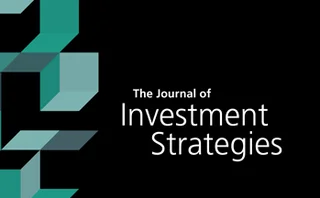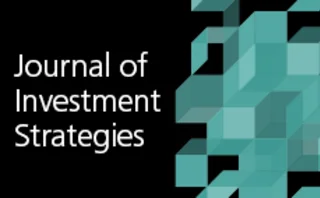Technical paper/Trading strategy
Quantum two-sample test for investment strategies
Quantum algorithms display high discriminatory power in the classification of probability distributions
Dynamic margining long/short equity trading strategies
A repo haircut model extends a previous solution for long-only strategies
Are cryptocurrencies cryptic or a source of arbitrage? A genetic algorithm approach
The authors identify triangular arbitrage trading opportunities through genetic algorithms in order to find insights into the volatility of cryptocurrencies and stablecoins with the largest market cap.
The cost of mis-specifying price impact
Expected returns can be significantly affected by the wrong use of impact models
Getting more for less: better A / B testing via causal regularisation
A causal machine learning algorithm is used to estimate trades’ price impact
Momentum transformer: an interpretable deep learning trading model
An attention-based deep learning model for trading is presented
Trading the vol-of-vol risk premium
Applications of the vol-of-vol parameter for cross-asset derivatives are presented
Optimal trade execution with uncertain volume target
This paper demonstrates that risk-averse traders can benefit from delaying trades using a model that accounts for volume uncertainty.
Linking performance of vanilla options to the volatility premium
A framework to account for vanilla options' performance in trading strategies is presented
Abnormal returns and stock price movements: some evidence from developed and emerging markets
This paper investigates the impact of abnormal returns on stock prices by using daily and hourly data for developed and emerging markets from 2010 up until 2020.
Forecasting volatility and market returns using the CBOE Volatility Index and its options
This paper examines the CBOE VIX, the VIX options’ implied volatility and the smirks associated with these options.
The value-at-risk of time-series momentum and contrarian trading strategies
This paper not only provides a theoretical model for the value-at-risk of active and passive trading strategies but also discusses the substantial implications relevant to risk management.
A principled approach to clean-up costs in algo trading
The opportunity cost associated with the cancelled portion of an order is quantified
What’s so special about time series momentum?
We find that the buy-and-hold (B&H) strategy for the S&P 500 index (^GSPC) for January 1950–April 2019 had a significantly higher return than that produced by time series momentum (TSM). However, TSM was superior in terms of the Sharpe ratio due to its…
Optimal dynamic strategies on Gaussian returns
It is hoped that this paper will form a foundational approach to the study of dynamic strategies and how to optimize them. We make efforts to understand their properties without claiming to understand why they work (ie, why there are stable…
Is trading indicator performance robust? Evidence from scenario building
This paper challenges widely applied trading indicators with regard to their ability to generate a robust performance.
A closed-form solution for optimal mean-reverting strategies
The heat potentials method is used to find the optimal profit-taking and stop-loss levels
Beta hedging: performance measures, momentum weighting and rebalancing effects
In this paper, the authors discuss the various performance measures of beta hedging and offer a new synthetic criterion that accounts for both risk-adjusted returns and losses of trading strategy.
Winning investment strategies based on financial crisis indicators
The aim of this paper is to create systematic trading strategies built around several financial crisis indicators, which are based on the spectral properties of market dynamics.
Risk averse fractional trading using the current drawdown
In this paper, the fractional trading ansatz of money management, also called growth optimal trading, is reconsidered. Special attention is paid to the chance and risk parts of the goal function for the related optimization problem.
Speed and dimensions of trading
In this paper, two new portfolio statistics are introduced: ENT, which measures trading speed, and ENTD, which measures trading diversity. Together with vectors representing major trading directions, these provide new insight into the intrinsic…














